All-Electrics & Stretch-Blow Get Top Billing
Energy efficiency and production cost savings were dominant themes of the blow molding exhibits at K 2001. A handful of new all-electric machines aroused intense interest, though they are aimed primarily at niche markets. And in two-stage (reheat) PET stretch-blow molding, the focus was on boosting output per cavity.
More all-electrics debut
Magic MP of Italy grabbed attention with new all-electric machines: model EP-L3 for extrusion blow molding PP and HDPE bottles and FV2500 for reheat stretch-blow molding of odd-shaped PET containers. "What these all-electrics achieve is affordability and reliability not feasible before," claims Tom Cameron, technical manager for Magic North America, Markham, Ont. He attributes the progress primarily to maturation of servo-electric drives and simplified clamping technologies.
Magic showed the three-cavity, single-station EP-L3/ND, which makes bottles of up to 3 liters. EP systems come with one to six cavities and single or double stations. The company is also developing models for up to 5L bottle sizes. EP machines cost 20% more than equivalent hydraulic units, but the premium is said to be compensated by 30-45% energy savings, improved bottle quality, reduced maintenance cost and noise, and a smaller footprint.
Magic's first all-electric extrusion-blow model was the Mini 100 DE in 1997. The company plans to convert other models to all-electric drives, including single- and double-sided versions of the MG-L1 and MG-L5 models.
Magic's FV2500 reheat system is tailored for blowing non-conventional PET shapes, including ultra-flat, highly oval, and off-center bottles. A two-cavity version makes a 28-g flat shampoo bottle at 2200 pieces/hr. Instead of a conventional ir oven, this machine uses conductive heating inside and outside the preform, which is said to give increased freedom to profile bottle wall thickness.
Bekum of Germany (represented here by Bekum America Corp., Williamston, Mich.) introduced an all-electric, reheat stretch-blow system for making either PET or PP bottles. "Our system takes stretch-blow molding output for PP bottles to a higher level," states Gary Carr, Bekum's U.S. sales manager, who claims the six-cavity SB6 achieves output rates of 7000 PP or 8000 PET bottles/hr. Bekum previously offered only a hydraulic machine to stretch blow PP at 1800 bottles/hr. The SB6 boasts an extended linear oven and better control of preform temperature. A 12-cavity SB12 version is in development.
Meanwhile, two-year-old Alkam S.r.L. of Cordignano, Italy, launched four "hygienic" electro-pneumatic linear reheat-blow systems with four to 10 cavities. Each of these can produce PET bottles of up to 2L or 3L at outputs ranging from 4000 to 12,000 bottles/hr.
Standard hydraulic units
More traditional entries in extrusion blow molding include the new BW 3000 DE from Uniloy Milacron, Manchester, Mich., a hydraulic two-station shuttle system for high-output molding of small to medium-sized parts. It has closed-loop control of wall thickness programming, and the center-flow, spider die head reportedly offers uniform wall-thickness distribution and quick color changes. An integral robot with adjustable stroke allows changes in bottle size without height adjustment.
Uniloy Milacron also unveiled the UMR 20 PC for the hotly contested returnable water-bottle market, where polycarbonate (PC) faces a challenge from PET. This reciprocating-screw machine for 20L bottles has a center-fed head that is said to reduce melt stagnation and eliminate burn marks.
Wilmington Machinery, Wilmington, N.C., has a new continuous rotary machine for molding large parts for furniture and material handling. Up to seven layers can be incorporated to provide barrier or improve appearance.
In injection-blow molding, Uniloy Milacron's new IB 70-3 S molds up to 1900 PET or PP bottles/hr with six cavities running 10-cc cosmetics bottles. It uses a Ferromatik Milacron injection unit that improves control of injection pressure and speeds screw changes.
New options for PET
Husky Injection Molding Systems, Bolton, Ont., has entered the one-stage (integrated) PET blow molding market with the Index SB, a fresh design based on its Index rotary-platen preform injection press. The SB uses a 125-ton Index preform system with two platen positions instead of four. After molding a set of preforms in two to 24 cavities, the moving platen rotates 180°, and a small "flipper" robot extracts the preforms and places them on a six-station rotary table. The table carries the preforms through two infrared conditioning stations to the servo-driven, 55-ton stretch-blowing station and then to an air-cooling station ejection station, where bottles are unloaded in an upright, oriented position. The injection to blowing cavitation ratio is 2:1 to optimize tool investment. The SB is suited to bottles of 25 cc to 5L in production volumes under 50 million parts/yr. It is aimed at producers who make many different bottles and need rapid (under 2-hr) tool changes.
Nissei ASB (U.S. office in Atlanta) unveiled several new or upgraded single-stage stretch-blow systems. Especially suitable for wide-mouth (up to 70-mm) containers is the new ASB-12N/10. A two-cavity variant runs 18-g bottles in 8.5 sec. Productivity is improved via continuous nozzle touch and increased (12-ton) clamp tonnage.
Nissei's newly upgraded PF8-4B system is aimed at flat and oval containers. Addition of a neck-orientation device enhances production of non-round bottles and flip-top closures. Nissei's ASB-70 DPW one-stage workhorse machine for smaller containers at 1500 to 6000 pieces/hr has been upgraded to handle 24 cavities.
In reheat stretch-blow molding, suppliers trumpeted new benchmarks in output per cavity. For example, SIG Plastics Technology (now SIG Corpoplast) (North Branch, N.J.) showed off the latest version of its wheel machines, whose output has been boosted to 1500 bottles/hr per cavity. The wheel has been re-engineered as a support ring on which blow stations are mounted. Modularity allows for graduated capacity increases from 10 up to 20 cavities. A new linear heating oven speeds product changes.
SIG also launched the Premax 64 preform injection machine with 64 cavities to complement its 48- and 96-cavity units. The Premax 64 is said to give 40% higher throughput than the 48-cavity version without adding much to machine cost or footprint. Pitch distance between cavities is reduced to 55 x 150 mm. A control upgrade integrates clamp opening/closing with robotic removal.
Sipa of Italy (Sipa North America is in Atlanta) has offered SFR rotary reheat systems with up to 20 molds and single cavities, capable of up to 28,000 bottles/hr. Its new SFR 16/32 system has 16 molds with dual cavities. It makes bottles up to 1L at up to 38,000/hr.
Krones AG of Germany (and Franklin, Wis.) launched a 16-cavity version of its Contiform S/H two-stage system. It makes 25,600 bottles/hr in sizes up to 3L, including heat-set and wide-mouth types.
Related Content
All-Electric Machines & Blow Molding Automation Featured at K 2022
Magic MP spa will present new EBM auto adjustment, electric accumulator-head technology, a larger ISBM machine, a quick-mold-change system, and robotic product handling/palletizing at this month’s show in Düsseldorf.
Read MoreKrones Acquires Netstal
Krones adds PET preform injection molding to its bottle blowing and filling capabilities, as well as cap molding and expansion into medical, food and other markets.
Read MoreCoca-Cola’s Redesign of Small PET Bottles Pushes Lightweighting Below Prior ‘Floor’
Coca-Cola thought it had reached the limits of lightweighting for its small PET carbonated soft drink bottles. But a “complete redesign” led to a further 12% reduction.
Read More50 Years of Headlines … Almost
I was lucky to get an early look at many of the past half-century’s exciting developments in plastics. Here’s a selection.
Read MoreRead Next
People 4.0 – How to Get Buy-In from Your Staff for Industry 4.0 Systems
Implementing a production monitoring system as the foundation of a ‘smart factory’ is about integrating people with new technology as much as it is about integrating machines and computers. Here are tips from a company that has gone through the process.
Read MoreMaking the Circular Economy a Reality
Driven by brand owner demands and new worldwide legislation, the entire supply chain is working toward the shift to circularity, with some evidence the circular economy has already begun.
Read MoreRecycling Partners Collaborate to Eliminate Production Scrap Waste at NPE2024
A collaboration between show organizer PLASTICS, recycler CPR and size reduction experts WEIMA and Conair will seek to recover and recycle 100% of the parts produced at the show.
Read More



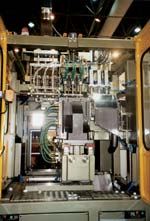
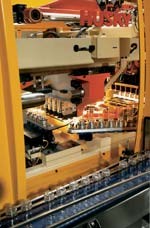
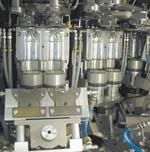











 (2).jpg;maxWidth=300;quality=90)







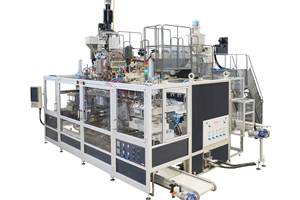

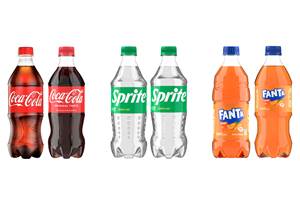




 (1).jpg;maxWidth=970;quality=90)